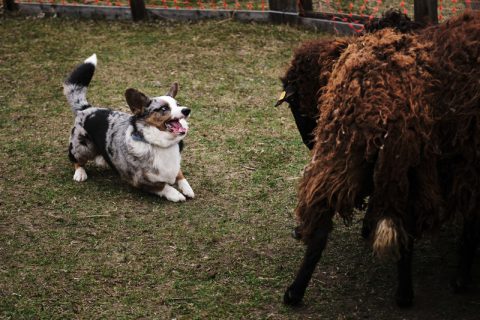
Short upper arms, common in dwarf breeds, can be a problem in a herding dog. A dog built like this will have a short, choppy strides with negligible reach, and that means the dog will work hard to get nowhere, tiring out before she even gets there. Such a dog is of little use to a farmer or shepherd who needs to move stock. Using the Cardigan Welsh Corgi as an example, the shoulders should be laid back at approximately 45 degrees enabling the shoulder blade and upper arms to meet at about 90 degrees. If her shoulders are set on too far forward with very little forechest, her front is likely steep, and thus, unsound.
By no means is the Cardigan Welsh Corgi standard singular in this regards. The standard of the Pembroke Welsh Corgi, another dwarf herding breed, calls for shoulder blades to be long and well laid back along the rib cage. The upper arms should be nearly equal in length to shoulder blades with the elbows parallel to the body.
Little slack is given to these breeds just because they are dwarf breeds. A working dog needs to move efficiently both for its own comfort, and to be of greater assistant to the farmer or rancher. Nor is the preference for a “good front” in an achondroplastic breed limited to herding dogs. The Glen of Imaal Terrier, reputed by Irish lore to have been used as turnspit dogs, was most definitely bred as a multi-purpose hunter used to hunt badgers and fox, and rid the homestead of rodents. Its standard reads: “Forequarters: Shoulder – Well laid back, broad and muscular.”
In a Dachshund, straight, upright shoulders are considered a defect. In a Basset Hound, “shoulders are well laid back and powerful. Steepness in shoulder, fiddle fronts, and elbows that are out, are serious faults.”
You get the idea.
Image: © Ekaterina Kobalnova | Dreamstime.com
